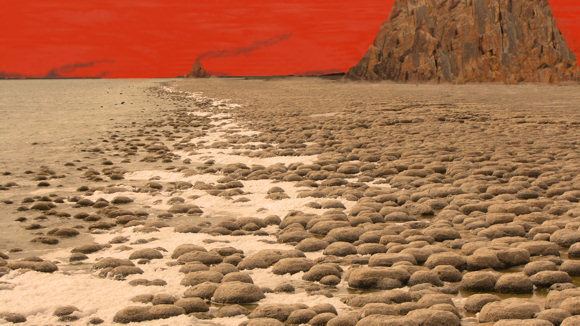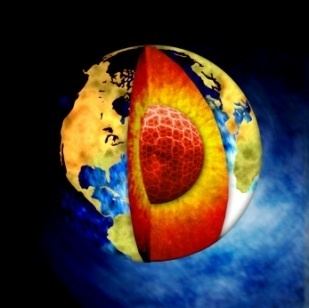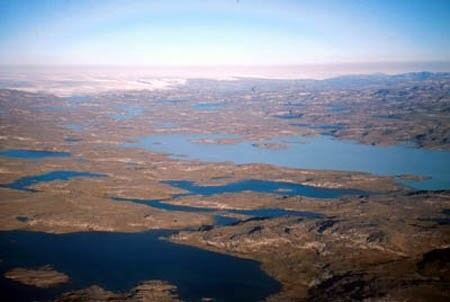 | ||
The Eoarchean ( /ˌiːoʊ.ɑːrˈkiːən/; also spelled Eoarchaean) is the first era of the Archean Eon of the geologic record for which the Earth has a solid crust. It spans 400 million years from the end of the Hadean Eon 4000 million years ago (Mya) to the start of the Paleoarchean Era 3600 Mya. The abiotic origins of life have been dated to this era and evidence of cyanobacteria date to 3500 Mya, just outside of this era. At that time atmosphere was without oxygen and the pressure values ranged from 10 to 100 bar (around 10 to 100 atmospheres).
Contents

Chronology

The Eoarchean was formerly officially unnamed and informally referred to as the first part of the Early Archean or Paleoarchean Era, both now obsolete names.

The International Commission on Stratigraphy now officially recognizes the Eoarchean Era as the first part of the Archaean Eon, preceded by the Hadean Eon, during which the Earth is believed to have been essentially molten.
The Eoarchaean's lower boundary or starting point of 4 Gya (4 billion years ago) is officially recognized by the International Commission on Stratigraphy.
The name comes from two Greek words: eos (dawn) and archaios (ancient). The first supercontinent Vaalbara appeared around the end of this period at about 3,600 million years ago.
Geology
A characteristic of the Eoarchean is that Earth possessed a firm crust for the first time. However, this crust may have been incomplete at many sites and areas of lava may have existed at the surface. The beginning of the Eoarchean is characterized by heavy asteroid bombardment within the inner solar system: the Late Heavy Bombardment. The Eoarchean is the first time from which solid rock formations on Earth have survived. The largest is the Isua Greenstone Belt on the south-west coast of Greenland and dates from 3.8 billion years. The Acasta Gneiss within the Canadian Shield have been dated to be 4,030 Ma and are therefore the oldest preserved rock formations. In 2008, another rock formation was discovered in the Nuvvuagittuq greenstone belt in northern Québec Canada which has been dated to be 4,280 million years ago. These formations are presently under intense investigation.
Atmosphere
3,850 million years old Greenland apatite shows evidence of 12C enrichment. This has sparked a debate whether there might have been photosynthetic life before 3.8 billion years.
